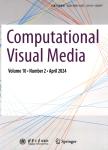Detecting human-object interaction with multi-level pairwise feature network
Detecting human–object interaction with multi-level pairwise feature network作者机构:Key Laboratory of Pervasive ComputingMinistry of EducationBNRistDepartment of Computer Science and TechnologyTsinghua UniversityBeijing 100084China College of Information Sciences and TechnologyPennsylvania State UniversityUniversity ParkPA 16802USA.
出 版 物:《Computational Visual Media》 (计算可视媒体(英文版))
年 卷 期:2021年第7卷第2期
页 面:229-239页
核心收录:
学科分类:08[工学] 080203[工学-机械设计及理论] 0835[工学-软件工程] 0802[工学-机械工程] 0811[工学-控制科学与工程] 0812[工学-计算机科学与技术(可授工学、理学学位)]
基 金:supported by the National Natural Science Foundation of China(Project No.61902210) a Research Grant of Beijing Higher Institution Engineering Research Center and the Tsinghua–Tencent Joint Laboratory for Internet Innovation Technology
主 题:human–object interaction detection pairwise feature network deep learning multi-level object instance
摘 要:Human–object interaction(HOI)detection is crucial for human-centric image understanding which aims to infer human,action,object triplets within an *** studies often exploit visual features and the spatial configuration of a human–object pair in order to learn the action linking the human and object in the *** argue that such a paradigm of pairwise feature extraction and action inference can be applied not only at the whole human and object instance level,but also at the part level at which a body part interacts with an object,and at the semantic level by considering the semantic label of an object along with human appearance and human–object spatial configuration,to infer the *** thus propose a multi-level pairwise feature network(PFNet)for detecting human–object *** network consists of three parallel streams to characterize HOI utilizing pairwise features at the above three levels;the three streams are finally fused to give the action *** experiments show that our proposed PFNet outperforms other state-of-the-art methods on the VCOCO dataset and achieves comparable results to the state-of-the-art on the HICO-DET dataset.



